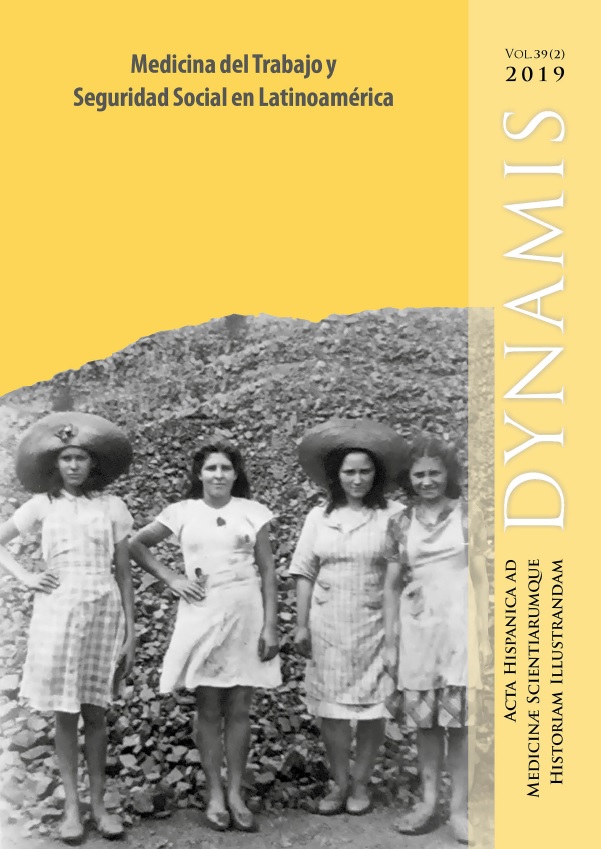La Dirección de Higiene y Seguridad del Trabajo: tensiones en torno a la delimitación de una función en el Estado peronista
DOI:
https://doi.org/10.30827/dynamis.v39i2.9838Palabras clave:
medicina del trabajo, primer peronismo, Secretaría de Trabajo y Previsión, agencias estatalesResumen
A mediados del siglo pasado, durante los gobiernos de Juan Domingo Perón (1946-1952/1952-1955), el Estado argentino atravesó profundas transformaciones. En el seno del Poder Ejecutivo, se diseñaron nuevas áreas de incumbencia, entre ellas la de Trabajo y Previsión, con la creación de la Secretaría en 1943 y del Ministerio, seis años más tarde. La organización interna de esta repartición estatal contempló la construcción de una dirección que pretendía incidir en la definición y control de las condiciones de seguridad e higiene en los establecimientos laborales, a cargo del Dr. Leopoldo Bard, una figura de extensa trayectoria profesional y política. Esto representó fricciones con la Secretaría de Salud Pública por asegurar el bienestar, la salud y la productividad de los trabajadores, como parte de un objetivo más abarcativo que buscaba desarrollar servicios sanitarios para la mayoría de la población. Pero también significó la apelación a saberes vinculados a la medicina del trabajo, un campo profesional de contornos poco precisos, atravesado por la relación entre varios perfiles profesionales. Mediante el análisis de publicaciones especializadas y estatales, este trabajo propone, en primer lugar, trazar un panorama sobre la conformación de un campo de la medicina del trabajo en la Argentina de la primera mitad del siglo XX, para luego enfocarse en algunos de los avatares de la organización y funcionamiento de la Dirección de Higiene y Seguridad del Trabajo del área de Trabajo y Previsión durante el primer peronismo.Descargas
Descargas
Publicado
2019-12-05
Cómo citar
Luciani, M. P. (2019). La Dirección de Higiene y Seguridad del Trabajo: tensiones en torno a la delimitación de una función en el Estado peronista. Dynamis, 39(2), 335–355. https://doi.org/10.30827/dynamis.v39i2.9838
Número
Sección
Dossier
Licencia
Dynamis se encuentra adherida a una licencia Creative Commons Reconocimiento (by), la cual permite cualquier explotación de la obra, incluyendo una finalidad comercial, así como la creación de obras derivadas, la distribución de las cuales también está permitida sin ninguna restricción.

















